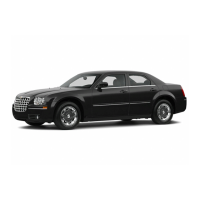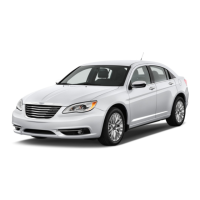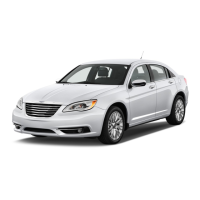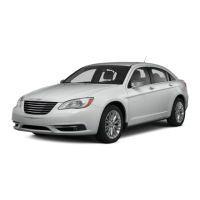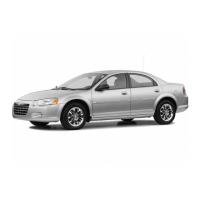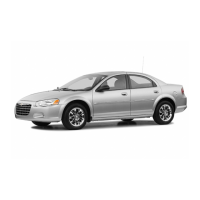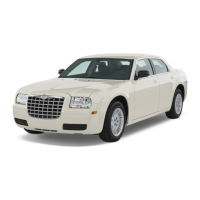SUSPENSION
TABLE OF CONTENTS
page page
WHEEL ALIGNMENT........................1
FRONT SUSPENSION ......................10
REAR SUSPENSION ....................... 44
WHEEL ALIGNMENT
TABLE OF CONTENTS
page page
DESCRIPTION AND OPERATION
WHEEL ALIGNMENT .......................1
DIAGNOSIS AND TESTING
SUSPENSION AND STEERING DIAGNOSIS .....2
VEHICLE LEAD DIAGNOSIS AND
CORRECTION ..........................4
SERVICE PROCEDURES
PRE-WHEEL ALIGNMENT INSPECTION ........4
CURB HEIGHT MEASUREMENT ..............4
WHEEL ALIGNMENT .......................6
SPECIFICATIONS
WHEEL ALIGNMENT SPECIFICATIONS .........9
DESCRIPTION AND OPERATION
WHEEL ALIGNMENT
DESCRIPTION
Vehicle wheel alignment is the proper adjustment
of all interrelated front and rear suspension angles.
These angles are what affects the handling and
steering of the vehicle when it is in motion.
The method of checking a vehicle’s front and rear
wheel alignment will vary depending on the type and
manufacturer of the equipment being used. Instruc-
tions furnished by the manufacturer of the equipment
being used should always be followed to ensure accu-
racy of the alignment, except when alignment specifi-
cations recommended by DaimlerChrysler differ.
Typical wheel alignment angles and measurements
are camber, caster, toe, and thrust angle.
• Camber is the number of degrees the top of the
tire and wheel assembly is tilted either inward or
outward (Fig. 1). Camber is a tire wearing angle.
Excessive negative camber will cause tread wear at
the inside of the tire, while excessive positive camber
will cause outside tire wear.
• Cross Camber is the difference between left and
right camber. To achieve the cross camber reading,
subtract the right side camber reading from the left.
For example, if the left camber is +0.3° and the right
camber is 0.0°, the cross camber would be +0.3°.
• Caster is the number of degrees of forward or
rearward tilt of the steering knuckle (Fig. 2). For-
ward tilt provides a negative caster angle, while rear-
ward tilt provides a positive caster angle. Although
caster does not affect tire wear, a caster imbalance
(side-to-side) on the vehicle may cause the vehicle to
lead to the side with the least positive caster. Caster
is not adjustable on this vehicle.
• Cross Caster is the difference between left and
right caster.
Fig. 1 Camber
1 – NEGATIVE
2 – POSITIVE
LH SUSPENSION 2 - 1
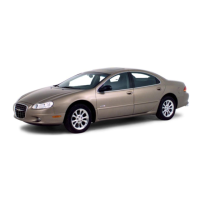
